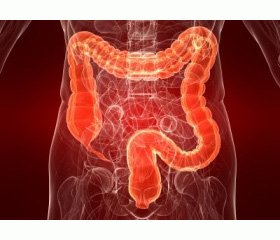Журнал «Здоровье ребенка» 3 (54) 2014
Вернуться к номеру
Large intestinal motility and tone of the intestinal walls in chronic non-ulcerative colitis in children
Авторы: O. Yu. Belousova - Kharkov Post-graduate Medical Academy, The Department of Pediatrics Gastroenterology and Nutrition Ukraine,
Рубрики: Педиатрия/Неонатология
Разделы: Клинические исследования
Версия для печати
Introduction. Intestinal dysmotility is one of the basic mechanisms leading to the progression of various diseases, which makes identification of the type of peristaltic disorders vital for further functioning of the digestive conveyor. The assessment of the motor-evacuation function of hollow digestive organs in children is normally conducted with the help of methods based on the registration of alterations of the electric potential of esophageal, stomach and intestine.
Sources and methods. Some authors recommend using electrocolography to examine disorders of the motor function of the large bowel, i.e. to examine the bioelectric activity of the large bowel. The evident advantages of this method along with enabling a fully objective assessment of the intestinal motility, are its simplicity, non-traumatic procedure and the possibility of long-term recording. General type of an electrocolographic curve, frequency of peristaltic and tonic components, wave amplitude in millivolt, contraction rhythm are taken into account while assessing the electrocolography data. Although the method is time-consuming, its results have not always been fully informative, which has led to further improvement of the techniques of tone and motility assessment.
The Department of Pediatrics Gastroenterology and Nutrition has been conducting research in this field in cooperation with Kharkov National University of Radio electronics for several years, which resulted in the development of the model and system of data processing in gastroenterology, protected with patents on invention. Electromyography studies have been performed in 101 child diagnosed with a verified chronic non-specific non-ulcerative colitis. The disorder of the motor function of the large bowel has been diagnosed in 89 children (88,1 %). Meanwhile the hypokinetic dyskinesia of the large bowel has been diagnosed in only 62 children (70 %), and hyperkinetic dyskinesia of the large bowel has been diagnosed in 27 children (30 %). The prevalence of the hypokinetic dyskinesia over the hyperkinetic one has been proved statistically (Р < 0,01). The disorder of the large bowel tone has been diagnosed in 73 children (72,1 %), including hypotonic dystonia in 49 patients (67 %), hypertonic dyskinesia in 24 children (33 %), with the prevalence of the hypotonic dyskinesia being proved statistically (Р < 0,01).
The disorder of the motor function and tone can be also diagnosed with the help of the lower gastrointestinal series. The lower gastrointestinal series were performed in 121 patient with chronic nonspecific, non-ulcerative colitis with the positive results of proctosigmoidoscopical or histological studies. In most cases the disorder of the large bowel motility had various nature and was characterized by both the disorder of the large bowel tone (mainly hypotonic), and kinetics (also mainly hypokinetic). Diskinesia by hypotonic type combined with dystonia by hypotonic type were prevailing, which resulted in the disorder of bowel emptying in patients.
Results. The frequency of functional disorders of motility in chronic nonspecific non functional colitis based on the results of the lower gastrointestinal series and electromyography studies is considered to be an important fact proving the pathogenetic role of the motility disorder in the disease formation. For that reason the comparison of the gastrointestinal series and electromyography studies is of particular interest. Analyzing the received data we should state the higher information value of electromyography studies which has enabled us to diagnose the disorders of motional and (or) tonic function of the large bowel in 88,1 % of patients, compared to 49 % with the help of the lower gastrointestinal series.
Taking into consideration the invasiveness of the lower gastrointestinal series, electromyography studies are more preferable for the evaluation of intestinal motility as less invasive (almost noninvasive) and more informative procedure.
As to the type of the detected changes it should be admitted that they’re of a unilateral type with prevailing hypokinetic dyskinesia and hypotonic dystonia, which means that the motility and tone changes detected by means of lower gastrointestinal series are similar to those detected by means of electromyography.
Conclusion. The conducted research proves that the chronic nonspecific non-ulcerative colitis in children is characterized by the disorder of intestine motility and tone with the overwhelming majority of children, with electromyography being the most informative and the safest method of study.

